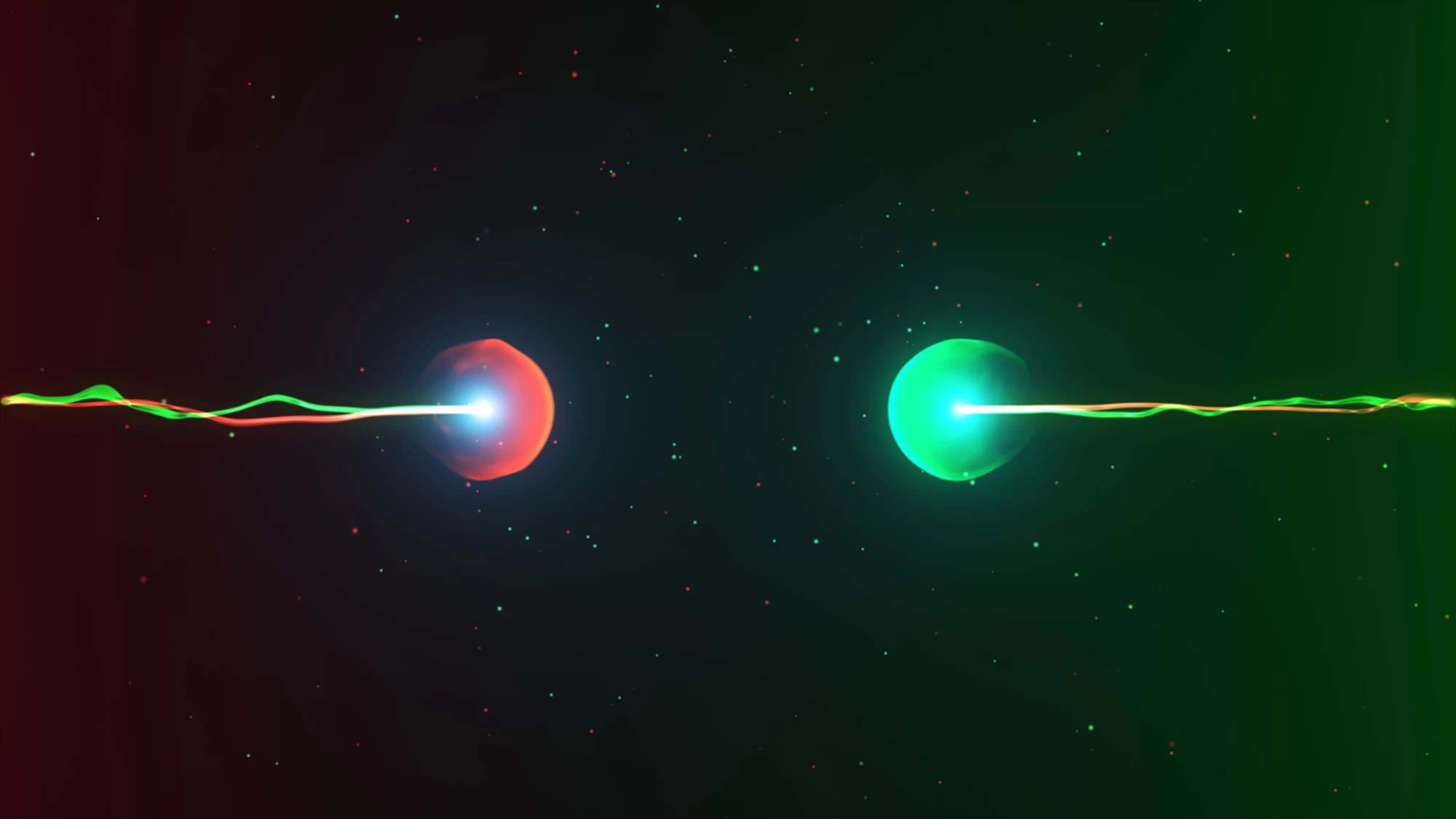A subatomic particle has been found to switch between matter and antimatter, according to Oxford physicists analyzing data from the Large Hadron Collider. It turns out that an unfathomably tiny weight difference between two particles could have saved the universe from annihilation soon after it began.
Antimatter is kind of the “evil twin” of normal matter, but it’s surprisingly similar – in fact, the only real difference is that antimatter has the opposite charge. That means that if ever a matter and antimatter particle come into contact, they will annihilate each other in a burst of energy.
To complicate things, some particles, such as photons, are actually their own antiparticles. Others have even been seen to exist as a weird mixture of both states at the same time, thanks to the quantum quirk of superposition (illustrated most famously through the thought experiment of Schrödinger’s cat.) That means that these particles actually oscillate between being matter and antimatter.
And now, a new particle has joined that exclusive club – the charm meson. This subatomic particle is normally made up of a charm quark and an up antiquark, while its antimatter equivalent consists of a charm antiquark and an up quark. Normally those states are kept separate, but the new study shows that charm mesons can spontaneously switch between the two.
What ultimately gave away the secret was that the two states have slightly different masses. And we mean “slightly” in the extreme – the difference is just 0.00000000000000000000000000000000000001 grams.
This incredibly precise measurement was fished out of data gathered during the Large Hadron Collider’s second run, by physicists at Oxford University. Charm mesons are produced at the LHC in proton-proton collisions, and normally they only travel a few millimeters before they decay into other particles.
By comparing the charm mesons that tend to travel further versus those that decay sooner, the team identified differences in mass as the main factor that drives whether a charm meson turns into an anti-charm meson or not.

This absolutely tiny find could have gigantic implications for the universe. According to the Standard Model of particle physics, the Big Bang should have produced matter and antimatter in equal amounts, and over time that all would have collided and annihilated, leaving the cosmos a very empty place. Obviously that didn’t happen, and somehow matter came to dominate, but what caused that imbalance?
One hypothesis that the new discovery raises is that particles like the charm meson will transition from antimatter to matter more often than they turn from matter to antimatter. Investigating whether that’s true – and if so, why – could be a major clue that busts open one of the biggest mysteries of science.
The study has been submitted to the journal Physical Review Letters, and is currently available on the preprint server arXiv.
Sources: Oxford University, CERN




